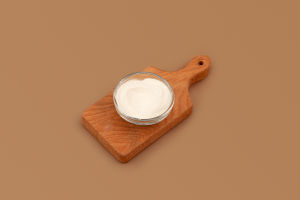We all love apples for their rich nutrients and delicious taste, making them a go-to fruit in our daily lives. However, with so many varieties available in the market, it can be a challenge to choose the perfect apple.
Today, let's dive into some practical tips to help us easily pick the freshest and most flavorful apples.
Understanding Apple Varieties
Apples come in many different varieties, each with unique flavors, colors, and uses. Common varieties include Red Fuji, Green Apples (Granny Smith), Golden Delicious, and Honeycrisp, among others. Each type has its own characteristics, so it's essential to choose based on our personal taste preferences and needs.
• Red Fuji: Known for its sweet taste and crunchy texture, perfect for eating raw and using in various desserts.
• Green Apples (Granny Smith): These are bright green in color with a tart, crisp taste, making them ideal for salads and juices.
• Golden Delicious: These apples have a golden yellow skin and soft, sweet flesh, perfect for snacking or making apple jams.
• Honeycrisp: Loved for its unique sweetness and juicy texture, especially great for eating fresh.
Inspecting the Appearance
When choosing apples, the appearance is an important indicator of quality. Fresh apples have smooth skin, vibrant color, and no visible blemishes. Poor-quality apples may show signs of discoloration, wrinkles, or spots.
• Color: Good-quality apples have a uniform color without noticeable spots. Generally, apples with bright colors are fresher.
• Skin: The skin should be smooth without noticeable damage or wrinkles. Avoid apples with cracks on the surface.
• Size: Choose apples that are medium-sized. Apples that are too small or too large might have a poor taste.
Check the Texture and Perform a Scent Test
It's highly recommended to touch and smell the apples while selecting them.
• Firmness: A high-quality apple should feel firm and not soft. When pressed, it should not dent easily.
• Touch: The surface should be dry and smooth, not sticky or overly waxed.
• Smell: Bring the apple close to your nose and smell it. Good apples usually have a strong, pleasant fragrance. If there's no aroma, it might have been stored for too long.
Understanding the Apple's Origin
Knowing the origin of the apples is also important when making a choice. Apples from local orchards typically travel shorter distances, which helps maintain their freshness.
• Locally Grown: Choosing locally grown apples supports farmers and ensures freshness.
• Organic Options: Health-conscious consumers might prefer organic apples, as they are usually grown without the use of chemical pesticides and have better flavor.
Storage and Eating Tips
Once you've bought your apples, proper storage can help maintain their freshness. Store apples in a cool, dry place, with an ideal temperature of 0-4°C. Try not to store apples alongside other fruits, as apples release ethylene gas, which can speed up the ripening process of other fruits.
The way we consume apples also affects our choice. For example, Red Fuji and Honeycrisp apples are best enjoyed raw, while Golden Delicious and Green Apples are often used in baking or making juices. Understanding the best way to enjoy each variety ensures we get the full taste experience.
Conclusion
When picking apples, applying these practical tips—like understanding the varieties, inspecting the appearance, checking texture, and performing a scent test—will ensure you choose the freshest and most delicious apples every time.
Also, by knowing the origin and proper storage and consumption methods, we can enjoy this healthy and tasty fruit to its fullest. With these tips, you'll be able to make smarter, more satisfying apple purchases, and every bite will be a delightful experience. Happy apple picking, Lykkers!


